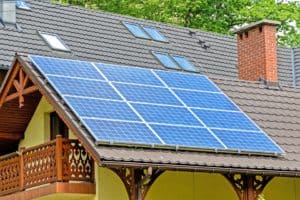
7 Simple Ways to Make Your Home More Eco-Friendly
By Cora Gold
While reducing climate change is the universal reason for making your private space eco-friendly, you have several personal motivations to do it. A green home is cost-effective, requires low maintenance, and has a healthier indoor environment, which is good for the whole family. If making your household more eco-conscious is one of your goals, here are seven easy ways to do so.
1. Replace Plastic
Plastic is present in several areas of your life, from food packaging to coffee cups and synthetic fabrics. Currently, people produce an overwhelming 400 million metric tons of plastic waste annually.
Whenever possible, swap single-use plastic in your household for reusable options, like changing from a plastic straw to a stainless steel or glass one. By eliminating harmful plastic, you do your share of protecting the environment.
2. Repurpose Packaging for Storage
Reuse containers to store unused household supplies safely, especially seasonal materials like fireworks and Christmas decor you only use during the holidays. If your area tends to stay dry, put items in the cardboard box that comes with the original packaging or save a shipping box the next time you receive an online order. When larger, sturdy boxes are so commonly available, there’s no need to purchase storage containers.
3. Switch to Smart Technology
Thanks to technological advances, you can now program your thermostat, lighting and other home appliances to turn on only when necessary. A smart thermostat and power strips allow you to save up to $180 and $200 per year, respectively. With this innovation, you can monitor your energy usage and avoid unnecessary expenses.
4. Dry Your Clothes Outside
Another energy-saving hack is to air dry your clothes whenever possible. By skipping the energy-consuming electric dryer, you can reduce your bill by up to 20%, which is a huge savings. In addition, you’ll enjoy collecting and folding naturally fresh-smelling clothes at the end of the day. It’s sustainable, cheaper, and non-polluting.
5. Make Your Own Cleaning Products
The water you rinse your bathroom floor with after cleaning with toxic products will find its way back into the water supply. However, you can swap them with a natural and homemade cleaning concoction to sanitize your home space.
Simply mix 1 cup of distilled white vinegar with 1 gallon of warm water to create the solution. Use it to clean ceramic floors and other surfaces, and add essential oils if you want some fragrance. This DIY cleaning mixture is good for the environment and your pocket.
6. Install a Bidet
Besides being more sanitary than toilet paper, a bidet is also environmentally friendly, as it reduces the need to cut trees to make tissue. It can minimize toilet paper use by 75% or more, saving you a few dollars. Plus, it’s a cost-effective investment — you pay for installation once compared to toilet paper, which you purchase regularly. You’re helping the environment by installing a bidet.
7. Switch to Solar Energy
Although they’re a considerable expense, investing in solar panels can be environmentally and financially sound in the long term. Like a bidet, you’ll pay to install the solar modules — which often last for 25–30 years — once, saving thousands of dollars in utilities.
The entire installation process is simple with the help of professionals. If you have the budget and want to limit your household’s carbon footprint immensely, setting up solar panels makes a massive positive impact.
Protect the Environment in Your Own Ways
There’s only one Earth and it’s everyone’s collective responsibility to take care of it. Start by instituting positive change in your household and affecting others by making decisions that mitigate the adverse impact of your actions on the planet. Whether it’s toning down the number of plastic products or choosing the kinds of appliances to use, make an environmentally friendly choice that improves your family’s health and financial situation.
About the Author:
Cora Gold is a sustainability writer who aims to live a healthy, low-waste lifestyle. Read more from Cora in Revivalist magazine, LinkedIn, and Twitter.